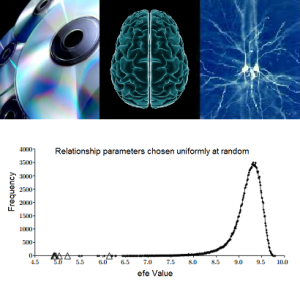How a complex dynamic network such as the human brain gives rise to consciousness has yet to be established by science. A popular view among many neuroscientists is that, through a variety of learning paradigms, the brain builds relationships and in the context of these relationships a brain state acquires meaning in the form of the relational content of the corresponding experience.
Indeed, whilst it is very difficult to explain why a colour looks the way it does, it is easy to see that consciousness is awash with relationships and associations; for example, red has a stronger relationship to orange than to green, relationships between points in our field of view give rise to geometry, some smells are similar whilst others are very different, and there’s an enormity of other relationships involving many senses such as between the sound of someone’s name, their visual appearance and the timbre of their voice. Moreover, relationships in various forms are also ubiquitous in mathematical structures and have given rise to whole areas of investigation such as graph theory.
It’s perhaps surprising then that mathematicians haven’t rushed to provide a mathematical theory for how the brain defines the relational content of consciousness, and consequently there are few mathematical theories of consciousness. However, in November 2015, Oxford Mathematician Dr Jonathan Mason had a research article published in the journal Complexity that provides an approach to this challenge.
The theory stems from information theory and introduces a version of Shannon entropy that includes relationships as parameters. The resulting entropy value (referred to as Float entropy) is a measure of the expected amount of information required to specify the state of the system beyond what is already known about the system from the relationship parameters. It turns out that, for non-random systems, certain choices for the relationship parameters are isolated from the rest in the sense that they give much lower float entropy values and, hence, the system defines relationships. One outcome of the work suggests that many relationships are determined in a mutually dependent way such as the relationships between colours and those that give the geometry of the field of view.
One other mathematical theory of consciousness is called Integrated Information Theory. Its initial development prioritised quantifying the level of consciousness of a system and, consequently, it is ill-suited for determining relational content. However, under further development, the two theories may turn out to be somewhat complementary.


